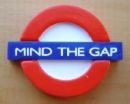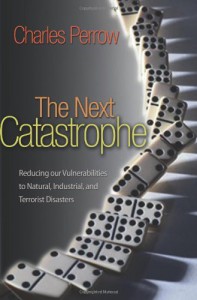 Value Priced, Superb Overview, Isolated from Other Literatures,August 28, 2008
Value Priced, Superb Overview, Isolated from Other Literatures,August 28, 2008
Peter M. Senge et al
At the end of this review following the links to other recommended books, I specify why this book receives four stars instead of five. Shortly I will load several images that will augment my written review, a couple of them recreated from this book, a couple my own original work.
I found this book absorbing, and while I recognized many many areas where the authors could have identified and respected the work of others more explicitly, I also found this to be the single best book for a manager of any business, any non-profit, any educational institution, any citizen advocacy group, with respect to the changing paradigm of business from industrial era obsess on profit and waste wantonly, to the information era of integrated full life cycle with total transparency of all costs (social, environmental, and financial) and ZERO footprint on Earth and society. There is ample original work from the authors, and this book is priced just right as a vehicle for energizing groups of any kind.
Following from my extensive notes:
+ A handful of top global businesses “get it” and have been pioneering footprint free zero waste business model: BP, GE, Coca-Cola, Dupont, even Nike.
+ Non-governmental organizations (NGO) know more about local needs and the emerging marketplace (four billion of the five billion poor, I am very disconcerted to see the business world “writing off” the one billion extreme poor) than any market “intelligence” firm.
+ With credit to Jared Diamond, I read for the first time about the unreal financial reality “bubble,” and the “real real” world bubble that is catching up with it. See John Bogle's book below for a deeper explanation of how the financial mandarins have stolen one fifth of the value and misdirected the Main Street economy while doing so.
+ Although I have read Stewart Hart's work, this book helped me appreciate in detail his Sustainability Value Matrix.
+ Other “big ideas” by others that are integrated into this book include that of civil society stakeholders; ethical consumerism, stabilization wedges (Palala and Socolow),ladder of inference (an anthropological practice), peacekeeping circles, requisite organization, and law of limited competition (Daniel Quinn)
PROBLEM STATEMENT:
1. Industrial Waste (USA wastes 100 billion tons a year, 90% of inputs)
2. Consumer/Commercial Waste & Toxicity (of 8B/year, 5B not absorbable)
3. Non-Renewable Resources in Sharp Decline
4. Renewable Resources down 30-70% and in some cases close to extinction tipping point (fresh water, topsoil, fisheries, forests)
THREE GUIDING IDEAS:
1. No viable path neglects future generations
2. Institutions matter
3. Real change must be grounded in new ways of thinking (see Durant below, capstone lessons from their ten volume history of civilization was that the only real revolution is in the mind of man, and that morality has a strategic value of incalculable proportions).
THREE AREAS OF BUSINESS CONCERN:
1. Energy & Transportation
2. Food & Water
3. Material Waste & Toxicity
THREE PRE-REQUISITES FOR NEW THINKING:
1. Seeing Systems Within Systems (Full Cycle Closed Earth)
2. Collaborating Across Boundaries (No one has it all)
3. Creating & adjusting instead of problem solving in isolation
SIX BASIC IDEAS:
1. Natural system encloses social and economic systems
2. Industrial system must operate in that context
3. Regenerable resources have harvest limits
4. Non-renewable resources are finite.
5. Waste is a cancer on the Earth
6. Socio-cultural community is the vessel for change
THREE SKILLS FOR CREATING THE SUSTAINABLE FUTURE:
1. Convening diversity of viewpoints
2. Listening to all, avoiding advocacy
3. Nurturing relationships over time and above money
EXPLICIT INCENTIVES FOR GOING GREEN:
1. Save dollars internally
2. Make dollars externally
3. Provide customers with competitive value
4. Sustainability as point of differentiation
5. Shape the future of your industry, win market share
6. Become a preferred supplier for giants like Home Depot
7. Change image and brand for better (70%+ of market value)
The book is full of examples of successful change implementation, and includes a number of “toolbox” pages that could be made into a protable booklet or distributed broadly across corporate networks.
I was struck throughout the book with the value of this work in identifying specific personalities and specific companies who could be drawn into the broader holistic work of emerging meta-strategic networks such as Reuniting America, the Transpartisan Institute, and Earth Intelligence Network. Two women in particular jumped out as future global leaders on the order of Lee Kuan Yew and Nelson Mandela:
1. Vivienne Cox of BP
2. Lorraine Bolsinger of GE
I put the book down deeply impressed with its concluding sections, and thinking to myself: China, CHINA, CHINA! That is the center of gravity for getting right on a massive scale in the near term.
Other important books NOT mentioned by this book:
The Story of Civilization by Will Durant with The Lessons of History (Complete in 10 Vols. plus The Lessons of History which was written by Durant to accompany the 10-volume set)
Organizational Intelligence (Knowledge and Policy in Government and Industry)
The Knowledge Executive
The Battle for the Soul of Capitalism
High Noon 20 Global Problems, 20 Years to Solve Them
The Fortune at the Bottom of the Pyramid: Eradicating Poverty Through Profits (Wharton School Publishing Paperbacks)
The New Age of Innovation: Driving Cocreated Value Through Global Networks
One from Many: VISA and the Rise of Chaordic Organization
The Wealth of Networks: How Social Production Transforms Markets and Freedom
Collective Intelligence: Creating a Prosperous World at Peace
I resolved to rate this book as a four for the following reasons, in relative order of annoyance:
1) Crummy index for what could have been a brilliant REFERENCE book, not just an orientation book for leaders that do not read a lot. This index is SO BAD it fails to list all the individuals mentioned, and completely blows off numerous key phrases (e.g. sustainability wedges) that would be in any properly created professional index.
2) No literature search and total isolation from the major literatures of Collective Intelligence, Wealth of Networks, Organizational Intelligence, Integral Consciousness, Closed Systems Engineering, Fortune at the Bottom of the Pyramid, and so on.
3) Understandable use of the iconic name of the lead author, but in all probability actually written by the other four authors.
4) Really marginal reference section and no bibliography (even more valuable would have been an annotated bibliography).
5) Absolutely clueless on the means of visualizing and using world-class visualization to create compelling multi-dimensional mental images (this is not to say I am any better, just that they missed a chance to be “the” reference work for the next seven years).
Bottom line on the deficiency: I read very broadly, and am increasingly distressed at the continuing isolation of authors from one another's work. It's time every work of this importance do a proper job of connecting to other works.
 Book End for Zero Waste, Brilliant Introduction, September 23, 2008
Book End for Zero Waste, Brilliant Introduction, September 23, 2008







